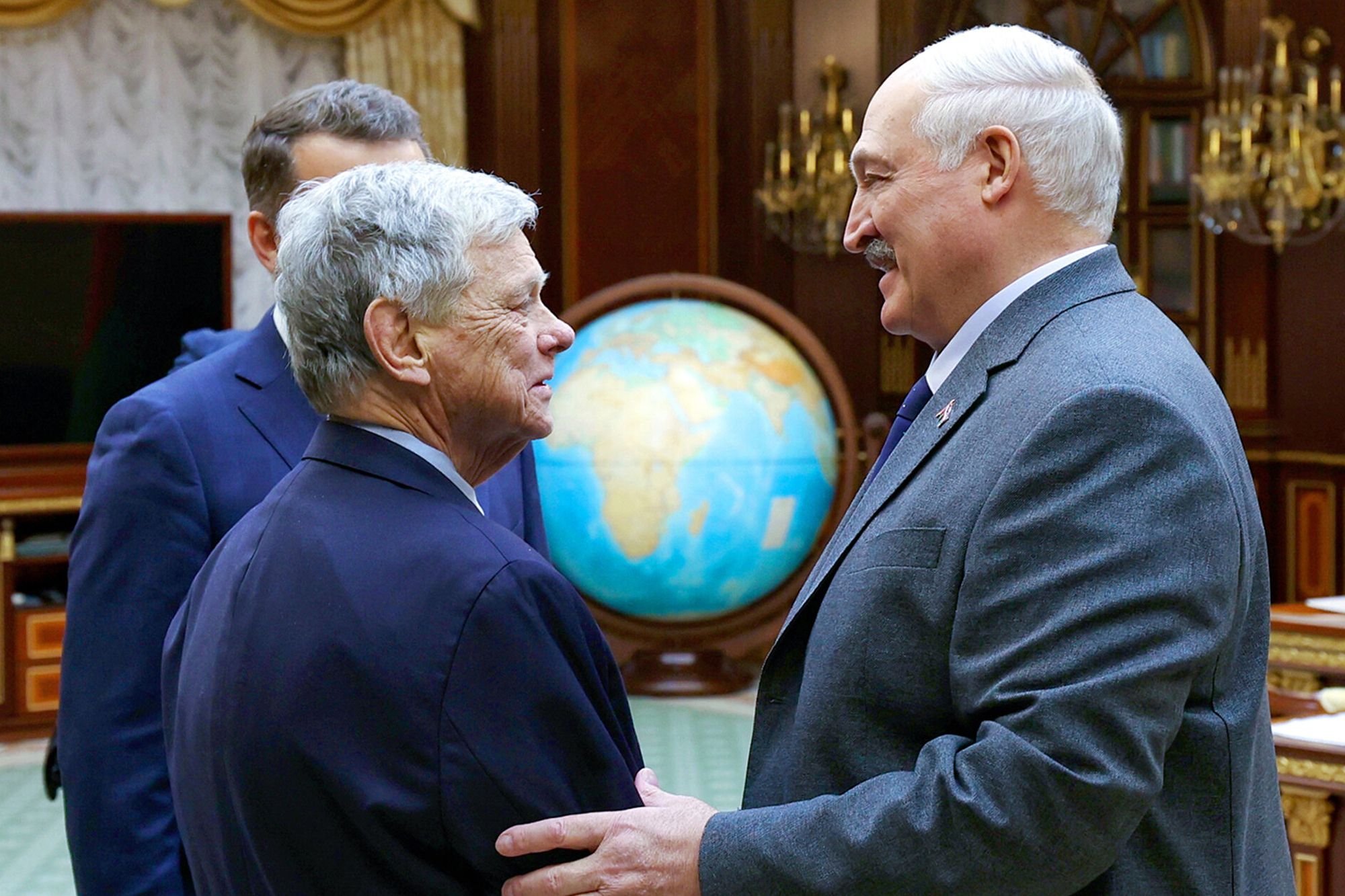Air raid sirens sounded on a South Korean island and residents evacuated to underground shelters after North Korea fired more than 20 missiles Wednesday, at least one of them in its direction and landing near the rivals’ tense sea border. South Korea quickly responded by launching its own missiles in the same border area.
The launches came hours after North Korea threatened to use nuclear weapons to get the U.S. and South Korea to “pay the most horrible price in history” in protest of ongoing South Korean-U.S. military drills that it views as an invasion rehearsal. The White House maintained that the United States has no hostile intent toward North Korea and vowed to work with allies to curb North Korea’s nuclear ambitions.
The North’s barrage of missile tests also came as world attention was focused on South Korea following a weekend Halloween tragedy that saw more than 150 people killed in a crowd surge in Seoul in what was the country’s largest disaster in years.
South Korea’s military said North Korea launched at least 23 missiles — 17 in the morning and six in the afternoon — off its eastern and western coasts on Wednesday. It said the weapons were all short-range ballistic missiles or suspected surface-to-air missiles. Also Wednesday, North Korea fired about 100 artillery shells into an eastern maritime buffer zone the Koreas created in 2018 to reduce tensions, according to South Korea’s military.
The 23 missiles launched is a record number of daily missile tests by North Korea, some experts say.
One of the ballistic missiles was flying toward South Korea’s Ulleung island before it eventually landed 104 miles northwest of the island. South Korea’s military issued an air raid alert on the island, according to the South’s Joint Chiefs of Staff. South Korean media published photos of island residents moving to underground shelters.
Hours later, South Korea’s military said it lifted the air raid alert on the island. South Korea’s transport ministry said it has closed some air routes above the country’s eastern waters until Thursday morning in the wake of the North Korean launches.
That missile landed 16 miles away from the rivals’ sea border. It landed in international waters off the east coast of South Korea. South Korea’s military said it was the first time a North Korean missile has landed so close to the sea border since the countries’ division in 1948.
“This is very unprecedented and we will never tolerate it,” the Joint Chiefs of Staff said in a statement.
Later Wednesday, South Korean fighter jets launched three air-to-surface, precision-guided missiles near the eastern sea border to show its determination to get tough on North Korean provocations. South Korea’s military said the missiles landed in international waters at the same distance of 16 miles north of the sea border as the North Korean missile fell earlier Wednesday.
It said it maintains a readiness to win “an overwhelming victory” against North Korea in potential clashes.
“North Korea firing missiles in a way that sets off air raid sirens appears intended to threaten South Koreans to pressure their government to change policy,” said Leif-Eric Easley, a professor at Ewha University in Seoul. “North Korea’s expanding military capabilities and tests are worrisome, but offering concessions about alliance cooperation or nuclear recognition would make matters worse.”
The Joint Chiefs of Staff earlier identified three of the North Korean weapons launched as “short-range ballistic missiles” fired from the North’s eastern coastal town of Wonsan, including the one that landed near the sea border.
North Korean short-range weapons are designed to strike key facilities in South Korea, including U.S. military bases there.
In an emergency meeting with top security officials, South Korean President Yoon Suk Yeol ordered officials to take swift unspecified steps to make North Korea face consequences for its provocation. He said he would consider the North Korean missile’s landing near the border “a virtual violation of (our) territorial waters.”
During the meeting, officials also lamented that the North Korean missile launches came as South Korea is in a mourning period over the crowd crush. They noted this “clearly showed the nature of the North Korean government,” according to South Korea’s presidential office.
Earlier Wednesday, Japanese Defense Minister Yasukazu Hamada said at least two ballistic missiles fired by North Korea showed a possibly “irregular” trajectory. This suggests the missiles were the North’s highly maneuverable, nuclear-capable KN-23 missile, which was modeled on Russia’s Iskander missile.
Japanese Prime Minister Fumio Kishida called North Korea’s continuing missile tests “absolutely impermissible.”
Animosities on the Korean Peninsula have been running high in recent months, with North Korea testing a string of nuclear-capable missiles and adopting a law authorizing the preemptive use of its nuclear weapons in a broad range of situations. Some experts still doubt North Korea would use nuclear weapons first in the face of U.S. and South Korean forces.
North Korea has argued its recent weapons tests were meant to issue a warning to Washington and Seoul over their joint military drills that it views as an invasion rehearsal, including this week’s exercises.
U.S. and South Korean officials have steadfastly said their drills are defensive in nature and that they have no intentions of attacking North Korea.
Additional reporting by The Associated Press.



 Poll: Majority In U.S. See Relations With Adversaries Souring
Poll: Majority In U.S. See Relations With Adversaries Souring North Korea Says It Will Never Give Up Nukes To Counter U.S.
North Korea Says It Will Never Give Up Nukes To Counter U.S.






